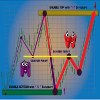Edit Your Comment
High Water Mark for manager's fees
May 14, 2013 at 21:13
會員從Oct 16, 2012開始
5帖子
folks if you don't know - don't confuse people.
here's the exact definition:
==============================
Investopedia explains 'High-Water Mark'
The high-water mark ensures that the manager does not get paid large sums for poor performance. So if the manager loses money over a period, he or she must get the fund above the high watermark before receiving a performance bonus. For example, say after reaching its peak a fund loses $100,000 in year one, and then makes $250,000 in year two. The manager therefore not only reached the high-water mark but exceeded it by $150,000 ($250,000 - $100,000), which is the amount on which the manager gets paid the bonus.
here's the exact definition:
==============================
Investopedia explains 'High-Water Mark'
The high-water mark ensures that the manager does not get paid large sums for poor performance. So if the manager loses money over a period, he or she must get the fund above the high watermark before receiving a performance bonus. For example, say after reaching its peak a fund loses $100,000 in year one, and then makes $250,000 in year two. The manager therefore not only reached the high-water mark but exceeded it by $150,000 ($250,000 - $100,000), which is the amount on which the manager gets paid the bonus.
arturas.sadauskas@
會員從Apr 18, 2011開始
38帖子

forex_trader_100706
會員從Nov 26, 2012開始
72帖子
May 15, 2013 at 08:24
會員從Nov 26, 2012開始
72帖子
If Equity is $100,000 and your Balance is $150,000. You can only withdraw the $100,000 right?
You can not charge a client a performance fee based on Account Balance until Equity equals the Account Balance.
Therefore, all trades must be closed or your performance Fee must be calculated from the current Equity status when Fee is calculated.
The Equity Amount must be higher than the concurrent month or No Performance Fee. You can not Hold your losses ( floating Equity is less than Account Balance) and expect to calculate a performance fee based on the Account Balance level.
You can not charge a client a performance fee based on Account Balance until Equity equals the Account Balance.
Therefore, all trades must be closed or your performance Fee must be calculated from the current Equity status when Fee is calculated.
The Equity Amount must be higher than the concurrent month or No Performance Fee. You can not Hold your losses ( floating Equity is less than Account Balance) and expect to calculate a performance fee based on the Account Balance level.
會員從Apr 18, 2011開始
38帖子
May 15, 2013 at 08:33
會員從Apr 18, 2011開始
38帖子
Hmmm, you have a very good point there, yes you are right, i am a scalper where all of my trades are closed in seconds, so i never experience any condition where my balance is for example 150,000 but equity is 100,000 due to floating loss caused by long term trading or hedging, thanks for clearing it up :)
會員從Nov 21, 2011開始
1601帖子
May 15, 2013 at 16:16
會員從Dec 19, 2012開始
28帖子
Guys... high water mark is simple.
Your "fund manager" or "money manager" simply charges a fixed percentage (agreed at the beginning of the investment) of what ever your investment sum is in the green, either month on month (typically) or annually...
Manager' typically charge 20% high water mark, month on month...
To give you an example:
£10,000 invested.
January: +4% = £400.00 = Manager's high water mark of 20% = £80.00 = Investment £10,320.00
February: -2% = -£206.40 = Manager gets nothing... = £10,113.60
March: +2% = £202.27 = Manager gets nothing... = £10,315.87
April: +3% = £309.47 = Manager's high water mark of 20% = (March £10,315.87 - Jan £10,320 = £4.13 - £309.47 = £305.34 / 20% = £61.07 (Manager Charge) = Investment £10,564.27
And so on...
It's great for the fund manager's because they're taking 0 risk and if they remain liquid (investment funds running in and out etc.) it means that every individual investor's performance isn't going to be identical. Therefore the fund managers are typically getting paid most of the time (depending on their consistency of course!)
The reason why the manager gets nothing in the month of March is because they only get paid based upon new equity high's which is typically calculated on a month end basis.
High water mark is the best choice for an investor because they know that the hedge fund manager (or what ever) is not getting paid unless you are...
Your "fund manager" or "money manager" simply charges a fixed percentage (agreed at the beginning of the investment) of what ever your investment sum is in the green, either month on month (typically) or annually...
Manager' typically charge 20% high water mark, month on month...
To give you an example:
£10,000 invested.
January: +4% = £400.00 = Manager's high water mark of 20% = £80.00 = Investment £10,320.00
February: -2% = -£206.40 = Manager gets nothing... = £10,113.60
March: +2% = £202.27 = Manager gets nothing... = £10,315.87
April: +3% = £309.47 = Manager's high water mark of 20% = (March £10,315.87 - Jan £10,320 = £4.13 - £309.47 = £305.34 / 20% = £61.07 (Manager Charge) = Investment £10,564.27
And so on...
It's great for the fund manager's because they're taking 0 risk and if they remain liquid (investment funds running in and out etc.) it means that every individual investor's performance isn't going to be identical. Therefore the fund managers are typically getting paid most of the time (depending on their consistency of course!)
The reason why the manager gets nothing in the month of March is because they only get paid based upon new equity high's which is typically calculated on a month end basis.
High water mark is the best choice for an investor because they know that the hedge fund manager (or what ever) is not getting paid unless you are...

*商業用途和垃圾郵件將不被容忍,並可能導致帳戶終止。
提示:發佈圖片/YouTube網址會自動嵌入到您的帖子中!
提示:鍵入@符號,自動完成參與此討論的用戶名。













